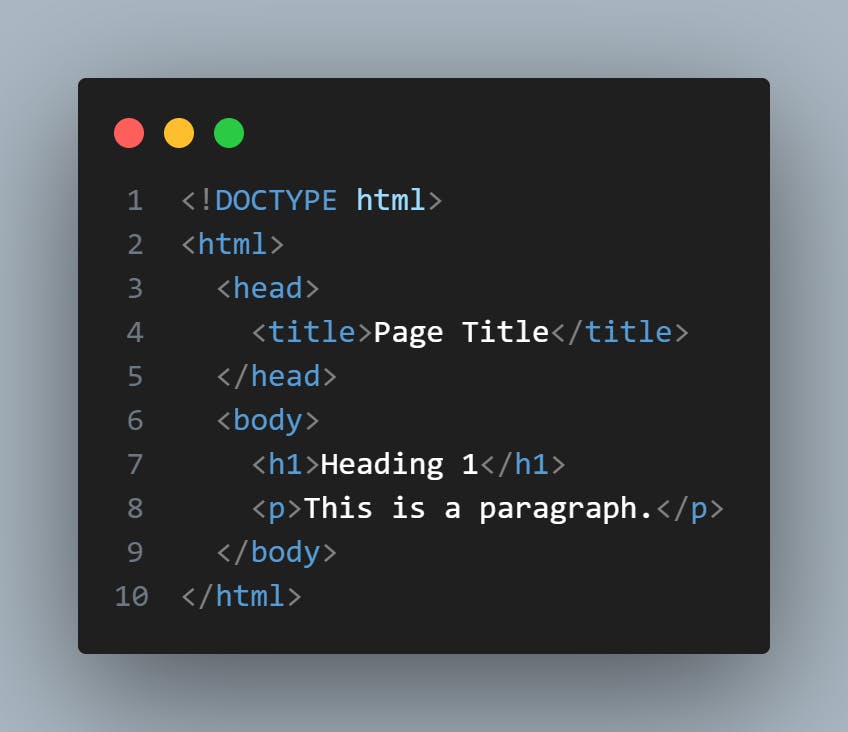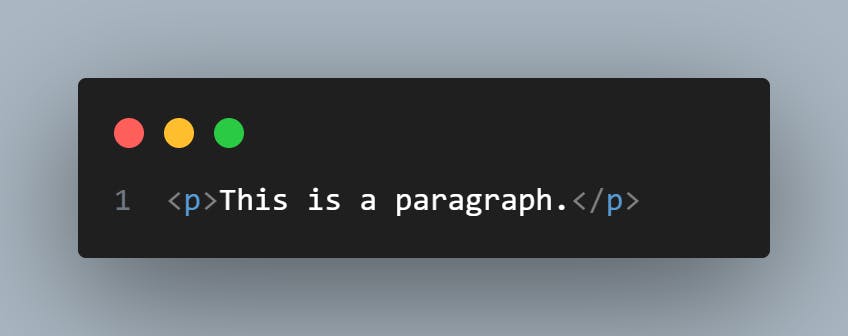In my previous blog post, I briefly discussed HTML and how it serves as the foundation for developing well-structured and semantically correct web pages. Now I'd like to explain why having a good understanding of HTML is so important in web development. As previously stated, HTML is the web's backbone, providing the structure and content of a web page.
Having worked extensively with HTML over the years, I can attest to the importance of building a strong foundation in this powerful markup language. HTML is the bedrock of the internet, serving as the backbone for web pages and web applications alike. With its ability to provide both structure and content to web pages, HTML forms the cornerstone of modern web design. By working in conjunction with CSS and JavaScript, HTML enables developers to create immersive and dynamic online experiences that engage and excite users.
Structure of an HTML document
Every HTML document is comprised of a set of essential components, each playing a critical role in the overall structure and functionality of the web page. At the core of this structure is the document type declaration, which sets the stage for the entire document by specifying the version of HTML being used. Next comes the head section, which contains vital metadata about the document, including the title, any links to external stylesheets, and any scripts that need to be loaded. Finally, the body of the document contains the actual content of the web page itself, such as text, images, and other multimedia elements.
Here is an example of the basic structure of an HTML document:

Tags
HTML uses tags to define the different elements on a web page. Tags are enclosed in angle brackets and come in pairs: an opening tag and a closing tag. The opening tag is used to define the start of an element, while the closing tag is used to define the end of an element. Some tags, such as the <img> tag does not have a closing tag.
Here is an example of a tag:

Attributes
Attributes are used to provide additional information about an element. Attributes are added to the opening tag of an element and consist of a name and a value, separated by an equals sign. Some attributes, such as the src attribute of the <img> tag is required for the element to work properly.
Here is an example of an attribute:

Common HTML Elements
There are many HTML elements available, but some of the most common ones include:
<h1>-<h6>: Used for headings.<p>: Used for paragraphs.<a>: Used for links.<img>: Used for images.<ul>and<ol>: Used for lists.
Here is an example of using some of these common HTML elements:

HTML is crucial for building well-structured and semantically correct web pages, improving accessibility and usability. Appropriate use of HTML tags and attributes can also enhance SEO, making it easier for search engines to understand website content. Familiarity with HTML can also simplify working with other web technologies like CSS and JavaScript, streamlining coding processes. A solid foundation in HTML is a fundamental skill that empowers developers to create engaging and accessible websites. Use the code snippets provided to start building your web pages and expand your web development capabilities.
Conclusion
In conclusion, a thorough understanding of HTML is a must-have for any aspiring web developer. It serves as the backbone for web development, providing the essential structure and content for creating engaging and dynamic web pages. By using the code snippets provided in this blog post, you can start building web pages with a solid foundation in HTML.
But this is just the beginning. In my next blog post, I'll be covering the fundamentals of CSS, an essential technology used for styling and formatting web pages. With CSS, you can create beautiful, engaging, and responsive websites that are sure to impress your users. Stay tuned to take the next step in your journey toward becoming a web development pro.
